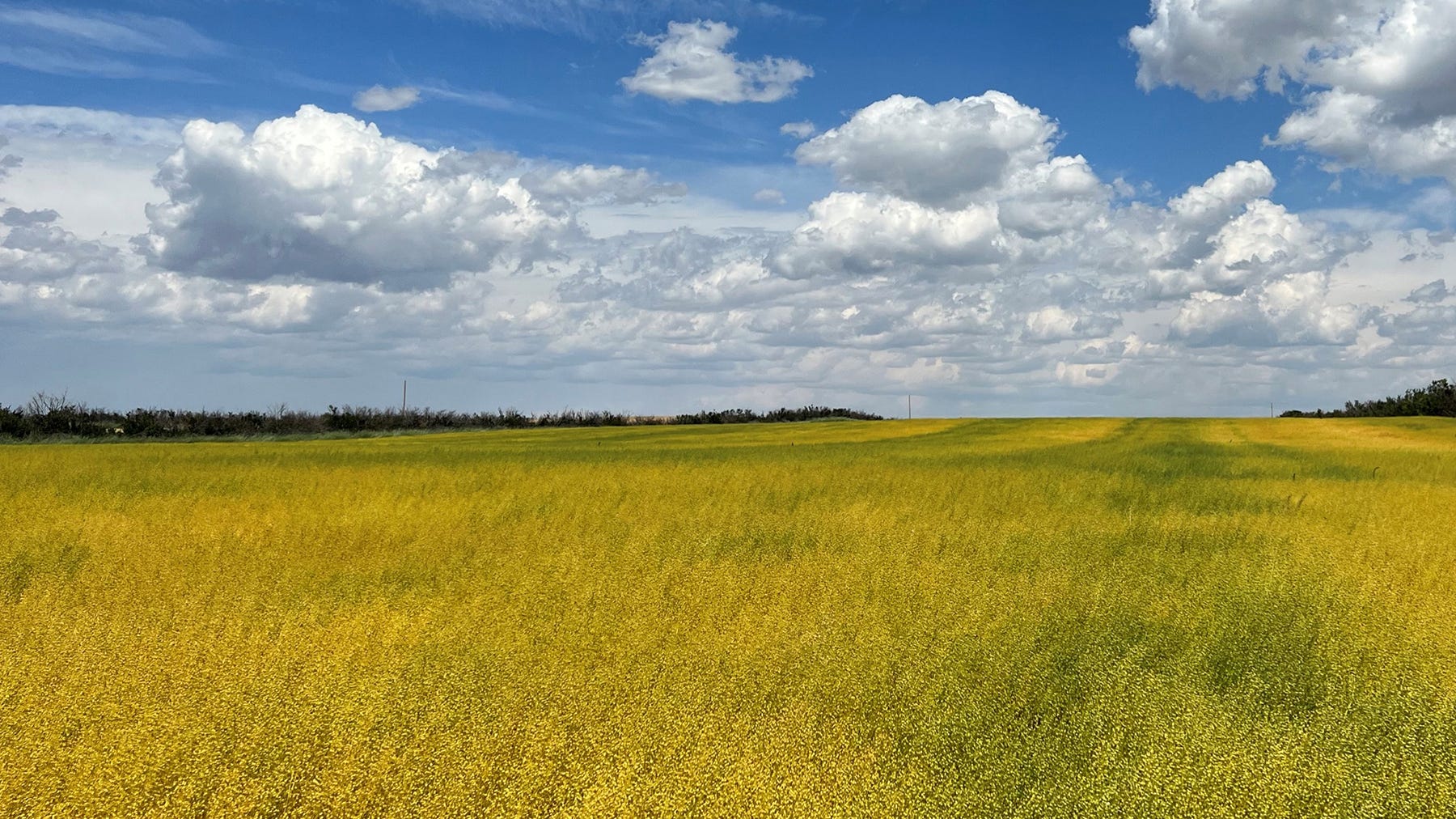
Fueled by the drive for alternative energy sources, an ancient oilseed is emerging as a profitable crop for farmers.
Production of camelina sativa is expected to expand since Syngenta Seeds joined the flight of companies homed in on the aviation biofuel market. Sustainable Oils Inc., a subsidiary of Global Clean Energy Holdings Inc., recently signed an agreement for Syngenta to sell camelina sativa seed. Sustainable Oils is currently leading the market for breeding and production of camelina. Interest in camelina, an ultra-low-carbon oilseed crop, has been building since the 2000s, when it was recognized as a low-carbon-index crop that can be used to produce sustainable aviation fuel as well as animal feed.
“The oil demand is going to dictate how quickly this market moves,” said Eric Boeck, regional director North America for Syngenta Seeds, in an interview at the Farm Progress Show in August. Boeck, who admittedly is not an economist, expects quick expansion. “The demand for oil and protein is high.”
Camelina adds on-farm profit opportunity
Camelina sativa production is now focused in Kansas and Colorado and on the Northern Plains. The ideal position for camelina in a crop rotation in that geography is planted to fallow land, or land left idle between crop cycles. Boeck sees the crop filling the ledger between wheat and corn.

OILSEED CROP: Camelina is an emerging oilseed crop with developing market opportunities for sustainable aviation fuel and livestock feed. Sustainable Oils Inc., a global leader in camelina breeding and production, and Syngenta Seeds are working together to increase acreage and expand the geographical footprint for this crop.
“It’s really a good opportunity for farmers from a revenue-producing standpoint,” Boeck said.
Karst spoke to the low-carbon-index score, which works into the low-input benefits of camelina production: low water use, improved soil management and increased soil quality for the crop following camelina.
One of the challenges to introducing a new crop is engaging processors. Planted acres and processing must come online in the same season for the crop to profitably reach end users. For that, Karst and Boeck said, their “closed loop,” or vertically integrated grower, program helps reduce the risk for farmers who plant the new crop. Through that program, the companies also contract with elevators to accept camelina.
“Farmers who buy camelina seed will have a harvest purchase contract. There is no marketing risk for the farmer since there is already an integrated value-chain model,” according to a news release from Syngenta.
With 45,000 acres now in commercial production, Karst said, the company is “very hands-on with our producers” from planting to combine calibration. Syngenta plans a similar program through its AgriPro dealer network.
“This is a crop that’s going to need some attention to detail,” Karst said. From planting depth to harvest, camelina demands timeliness and precision. Producers, he said, do well to “follow the agronomic profile that said, ‘Do this at this stage.’”
“It’s why we spend a lot of time with growers,” Karst said. “It’s a different crop than any of them have grown before.”
Camelina also offers management options that improve other crops in a rotation. For instance, Karst said, “This is a great crop to fight johnsongrass.”
Because camelina is a broadleaf crop, Karst explained, farmers can use grass herbicides over the top. In a rotation, this helps curb the population of resistant species in other crops in the rotation. Additionally, adding camelina to the rotation will help farmers in the current geography fight resistant kochia. With new varieties and an expanded geography, he said camelina production could be a new tool for farmers fighting giant ragweed and waterhemp.
Another point for camelina consideration, Karst said, is camelina doesn’t require new equipment for farmers who set up to produce small grains.
“They don’t need a new combine,” Karst said. “They just need to adjust the ones they have.”
For producers who planted canola, one of the differences between camelina and its distant cousin is that its seed hulls are not prone to shatter.
Expanding farmer opportunities with camelina
New crop opportunities have been known to spur acreage battles between commodities. With camelina, Boeck instead sees synergy.
In the alternative fuel market, an acreage competition would likely be with soybean. To that, Boeck said, “There aren’t enough soybean acres to meet the demand. My belief is that this is an additive effect rather than a replacement.”
Karst sees the demand for oil pushing acreage across all alternative fuel crops, including corn and soybeans. Considering federal support for alternative fuel production, some people look to the history of the ethanol market and question whether the camelina market could collapse with turbulent political winds.
Should that happen, Karst said, “We’ll be able to produce oil that’s competitively priced with any other plant-based fuel.”
Furthermore, Karst noted, the market for sustainable aviation fuel is not limited to the United States. “The demand is global,” Karst said, and “the demand right now is high.”
About the Author(s)
You May Also Like






